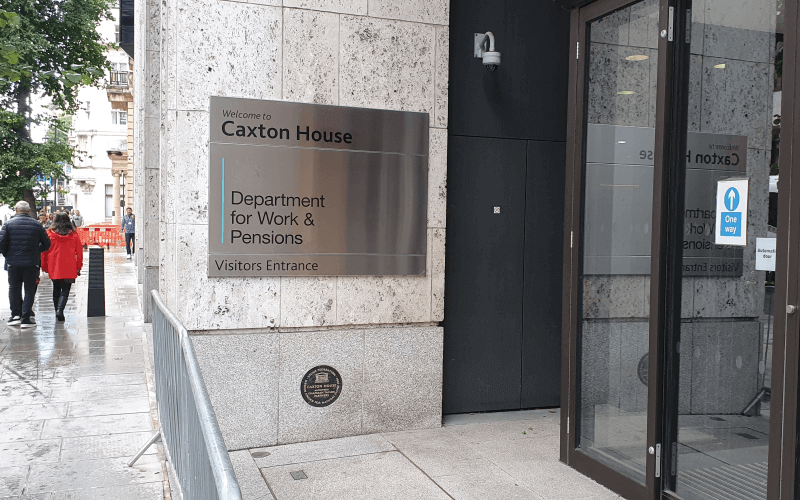Ministers have no idea how much impact their cuts to disabled people’s benefits will have on levels of disability poverty, the Department for Work and Pensions (DWP) has admitted.
DWP published figures in March that showed that the government’s decision to tighten eligibility for personal independence payment (PIP) will drag a quarter of a million working-age adults into both relative and absolute poverty* by 2030.
Another measure, to cut the health element of universal credit for new claimants from £97 per week currently to £50 per week in 2026-27, while freezing it for existing claimants until 2029-30, is estimated to drag another 50,000 working-age adults into relative poverty by 2030.
But even though the measures are aimed squarely at disabled people, nowhere in the publication did DWP state how disability poverty would be affected by the two measures.
Because of this omission, Disability News Service (DNS) asked DWP in a freedom of information request for the impact of each of the measures in the Pathways to Work green paper solely on disabled people.
But DWP admitted this week that it had not been able to calculate their impact on disability poverty.
It claimed that it “does not hold information on the specific poverty impacts of the changes on disabled people, disaggregated from everyone else”.
It said this was because it had produced the poverty figures in March using its own policy simulation model (PSM) and its definitions of disability in this model were different from those used in its households below average income (HBAI) poverty statistics.
It added: “It has therefore not been possible to estimate the impact of the package on the level of poverty amongst individuals living in families with a disabled person, as this requires an estimate to be made using the HBAI definition.”
The failure to calculate the impact of its cuts on levels of disability poverty adds to mounting concerns about the way ministers – particularly work and pensions secretary Liz Kendall and social security and disability minister Sir Stephen Timms – have failed to be transparent about the impact on disabled people of the whole package of cuts.
It is still unclear how much in total will be cut from spending on disability benefits once all the government’s Pathways to Work measures are implemented, including those on personal independence payment, universal credit and employment and support allowance.
In answer to questions from MPs on the overall impact of the Pathways to Work cuts and reforms, Sir Stephen has repeatedly said that information “will be published in due course”, while a “further programme of analysis to support development of the proposals in the Green Paper will be developed and undertaken in the coming months”.
This week, employment minister Alison McGovern provided a similar answer to an MP to the one her department had provided to DNS.
She told Liberal Democrat Martin Wrigley in the written answer that it had “not been possible to estimate the impact of the [overall] package on the level of poverty amongst individuals living in families with a disabled person, as this requires an estimate to be made using the HBAI definition.
“However, given the balance of the package we would expect much of the increase in poverty to be focused amongst individuals in this family type.”
McGovern also told the independent – former Labour – MP Apsana Begum that the government had not calculated how many PIP recipients who live with a child and are already in poverty will lose their PIP daily living component as a result of the government’s changes.
But she said DWP had calculated that 50,000 families with children who were already estimated to be in relative poverty (after housing costs) will lose income as a result of the PIP cuts in 2029-30.
And McGovern told Begum, in response to another question, that DWP had also failed to calculate how many disabled people who receive PIP and are already living in poverty will no longer be eligible for the PIP daily living component after the cuts.
But she said that 250,000 families already in relative poverty (after housing costs) will lose income as a result of the PIP cuts in 2029-30.
*Households in absolute poverty are those earning below 60 per cent of the average (median) income in 2010-11, adjusted for inflation; those in relative poverty are those earning less than 60 per cent of the current median household income
A note from the editor:
Please consider making a voluntary financial contribution to support the work of DNS and allow it to continue producing independent, carefully-researched news stories that focus on the lives and rights of disabled people and their user-led organisations.
Please do not contribute if you cannot afford to do so, and please note that DNS is not a charity. It is run and owned by disabled journalist John Pring and has been from its launch in April 2009.
Thank you for anything you can do to support the work of DNS…

 DWP helped cause mental distress of poverty-stricken benefit claimant who took her own life, says coroner
DWP helped cause mental distress of poverty-stricken benefit claimant who took her own life, says coroner Second wave of cuts could lead to ‘decimation’ of Access to Work scheme, but DWP refuses to comment
Second wave of cuts could lead to ‘decimation’ of Access to Work scheme, but DWP refuses to comment Disabled activists gate-crash DWP event and send message to ministers: ‘Your consultation is a sham’
Disabled activists gate-crash DWP event and send message to ministers: ‘Your consultation is a sham’